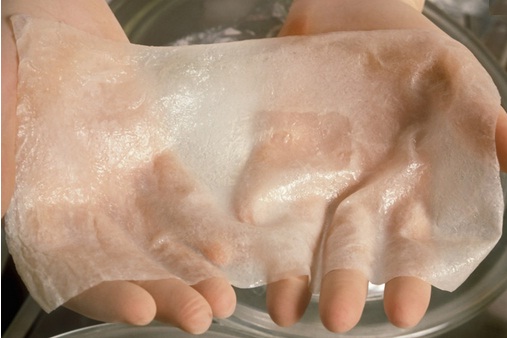Have you heard of oscillating gel? Researchers at University of Pittsburgh and the Massachusetts Institute of Technology (MIT) have demonstrated that this material responds to mechanical and chemical stimuli something only previously displayed by living membranes such as human skin. For robots the gel could serve as an artificial skin.
Known as Belousov-Zhabotinsky (BZ) gel, and first discovered in the 1950s, it wasn’t until the mid 1990s before experiments demonstrated the gel’s unique abilities to pulsate performing bio-mimicry. Described by scientists as “smart” or “intelligent” the actual physical and chemical response is a chemical volume phase transition resulting from external environmental changes that leads to the swelling and shrinking of the gel.
The recent experiments at MIT and University of Pittsburgh have demonstrated that the gel can be used with sensors or actuators for a number of different applications including usage in bio-medicine for drug release devices, and in robotics.
 Oscillating gel is a material that can sense and respond to external stimuli. When left on their own in response to stimulus they oscillate just like heartbeats and arterial pulsations. Source: Revoseek.com
Oscillating gel is a material that can sense and respond to external stimuli. When left on their own in response to stimulus they oscillate just like heartbeats and arterial pulsations. Source: Revoseek.com
In a robot with skin made from oscillating gel it would feel pressure and react to it through the chemical signal it would receive. In addition the gels could sense any damage they receive such as a tear or puncture and perform self-healing. Scientists are also looking at ways to use the gel to create synthetic muscles that work in combination with mechanical actuators.
Are we getting closer and closer to our Star Trek cyborg friend, Data? As the 21st century unfolds I think we are.








